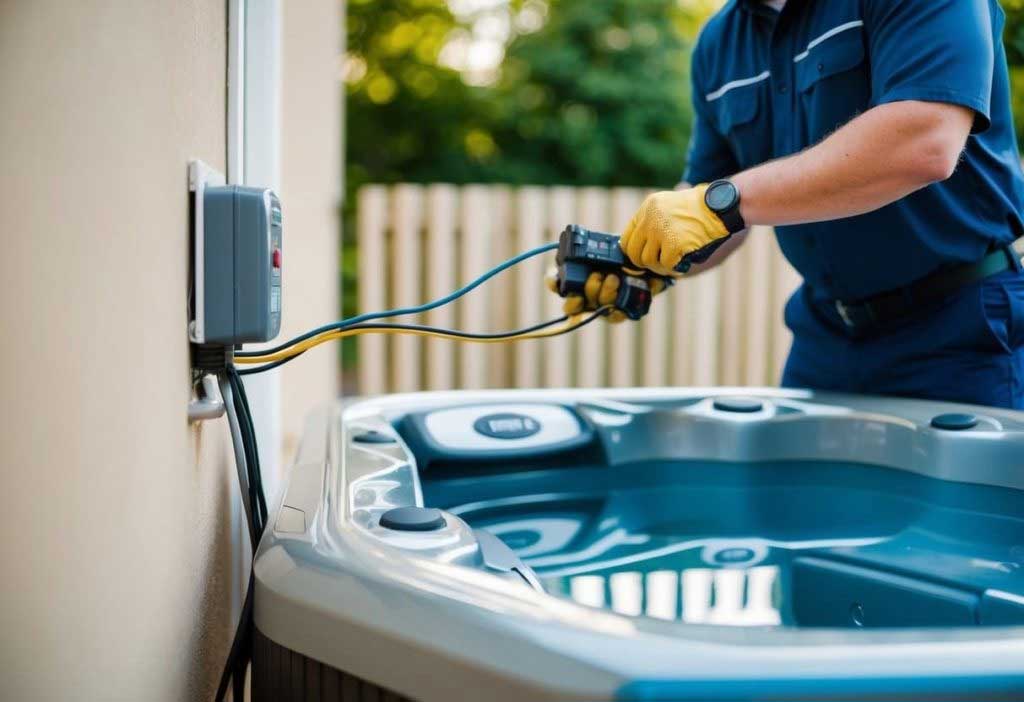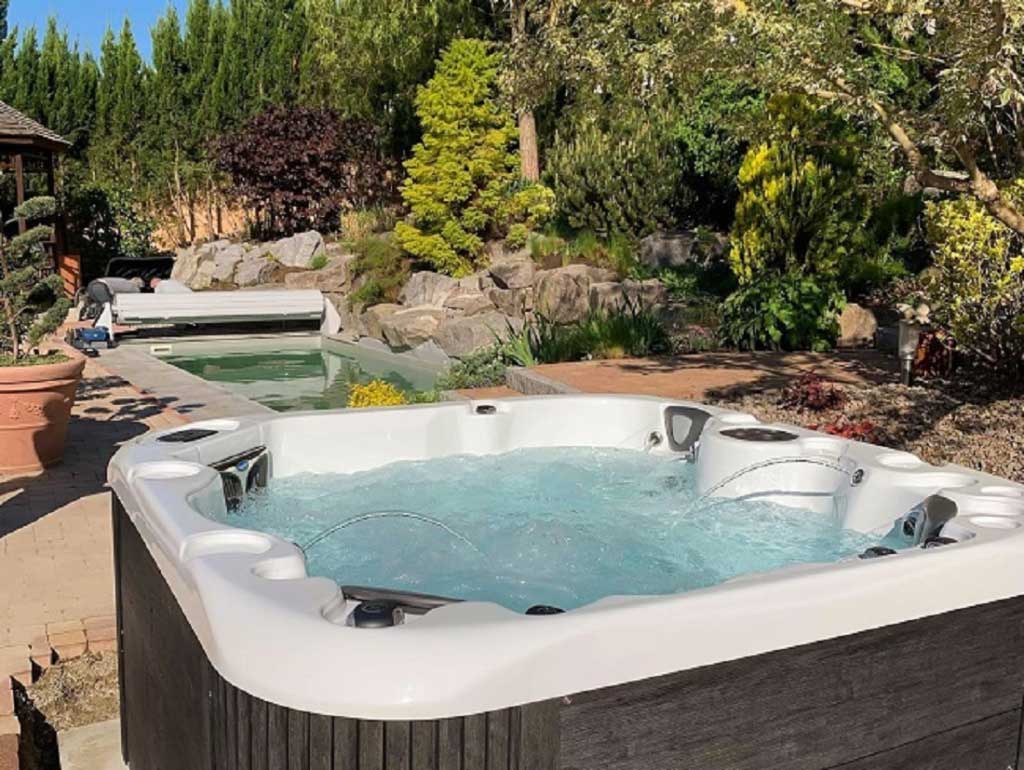A hot tub is the ultimate symbol of relaxation, a private oasis where the stresses of daily life melt away with every warm bubble. But behind the luxurious experience lies a sophisticated web of electrical components that keep your spa running smoothly and safely. Whether you’re installing a new hot tub or upgrading an existing one, understanding the electrical considerations is key to ensuring peace of mind and uninterrupted enjoyment.
This blog explores the essentials of hot tub electrical installations, guiding you through the planning, setup, and maintenance needed to power your personal retreat without worry.
The Power Behind the Bubbles
Hot tubs rely on a combination of high-powered components to maintain water temperature, create jets, and support lighting or entertainment features. These include:
- Pumps and Heaters: Circulate and heat the water efficiently.
- Control Panels: Manage temperature, jets, lighting, and more.
- Lighting: Both underwater and perimeter lighting enhance ambiance.
- Ozone or UV Systems: Purify water for hygiene and clarity.
- GFCI Protection: Ground Fault Circuit Interrupter devices protect against electrical shock.
Each of these elements demands reliable and safe electrical connections to function properly.

Planning Your Hot Tub Installation
The first step to a successful hot tub installation is proper planning. Here’s how to prepare:
1. Choose the Right Location
Your hot tub’s location affects both enjoyment and installation complexity. Key factors to consider:
- Proximity to your home’s main electrical panel.
- Accessibility for wiring and maintenance.
- Compliance with local building codes and safety distances (e.g., from windows, overhead power lines, or pools).
2. Determine Power Requirements
Hot tubs typically come in two types:
- Plug-and-Play (120V): Simpler installation, but limited heating and jet power.
- Hardwired (240V): Requires professional installation, offers faster heating and more powerful jets.
Hardwired systems need dedicated circuits and specific breaker types, often 50 or 60 amps depending on the model.
3. Obtain Necessary Permits
Electrical work for hot tubs usually requires permits. Check with your local municipality to ensure you meet all regulatory requirements before beginning installation.
Electrical Installation: Steps to a Safe Setup
1. Work with Licensed Electricians
A professional electrician will ensure your hot tub’s electrical setup complies with local codes and manufacturer specifications. DIY electrical work is risky and often illegal for spa installations.
2. Install a Dedicated Circuit
Your hot tub must have its own circuit, separate from other household loads. This prevents overloads and ensures reliable performance.
3. Use GFCI Protection
GFCI breakers or disconnects are mandatory for hot tubs. They detect ground faults and shut off power instantly, reducing shock risk.
4. Install a Disconnect Switch
A spa panel or disconnect switch is typically installed within sight of the hot tub, at a safe distance (usually 5-15 feet away). This allows quick shutoff in case of emergency or maintenance.
5. Conduit and Wiring
Use weather-resistant conduit and wiring rated for outdoor use. Proper sealing and routing prevent moisture infiltration and physical damage.
6. Bonding and Grounding
Bonding connects all metal components (e.g., railings, pumps) to equalize electrical potential. Grounding provides a safe path for fault current to flow to the earth.
Efficiency and Convenience: Smart Spa Solutions
In addition to safety, consider ways to enhance your hot tub’s energy efficiency and user convenience:
1. Energy-Efficient Heaters
Modern heaters are designed for faster warming with less energy use. Some hot tubs include insulation or thermal covers to retain heat.
2. LED Lighting
LED lights use less electricity and last longer than traditional bulbs, adding ambiance without high energy costs.
3. Smart Controls
Wi-Fi-enabled controls allow remote operation of temperature, jets, and lighting. Some apps provide energy usage data and maintenance reminders.
4. Timer Settings
Scheduling the hot tub to run during off-peak hours can reduce electricity costs.
Real-World Experiences: Lessons from the Field
Scenario 1: GFCI Troubleshooting
A homeowner experienced repeated GFCI trips after installation. The cause? A minor wiring error during connection. An electrician corrected the issue, ensuring reliable operation and highlighting the importance of professional work.
Scenario 2: Efficiency Gains
Another user upgraded to a high-efficiency heater and added a thermal cover. Result: faster heat-up times and a 20% reduction in monthly energy bills.
Maintenance Tips: Keep Relaxation Hassle-Free
Once your hot tub is up and running, maintenance ensures safety and longevity.
1. Inspect GFCI Regularly
Test your GFCI breaker monthly to confirm it trips and resets properly.
2. Monitor Wiring and Connections
Have an electrician inspect connections annually, especially before heavy seasonal use.
3. Maintain Water Quality
Balanced water reduces corrosion risk and extends equipment life. Follow manufacturer guidelines for water care.
4. Clean Filters and Components
Clean filters ensure efficient pump operation. Remove debris from the control panel area and inspect for moisture.

Regulations and Compliance: What You Need to Know
Staying compliant with electrical codes is critical:
- Local Codes: Vary by region; always verify current standards.
- CEC/NEC Requirements: Govern wiring methods, GFCI use, and installation practices.
- Manufacturer Instructions: Follow guidelines precisely for warranty validity and safety.
Conclusion: Soak Without Stress
Installing a hot tub is an investment in comfort and well-being, but it comes with serious electrical considerations. By planning carefully, hiring qualified professionals, and following maintenance best practices, you can relax without worry. Behind every soothing soak lies a carefully designed and executed electrical system—quietly ensuring that your retreat is as safe and efficient as it is relaxing.
